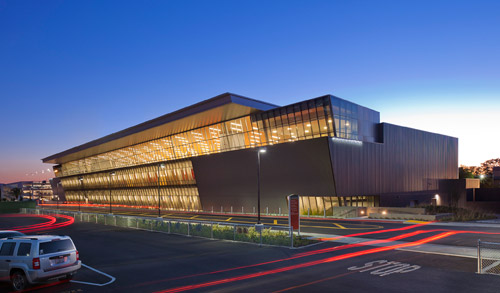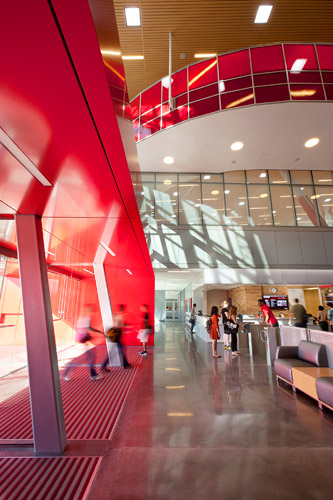Sustainable Design Principle #9: Prove It
Today’s post delves into Principle #9, from LPA’s 10 Principles of Absolute Design. For the past several months, we’ve been going into greater detail about these tenets, which were created by design teams in-house, to help us think more globally about sustainability and our approach to integrated sustainable design. Quantifiable, verifiable design success is one of the many things that set us apart from others in our field. May you enjoy this post, and may it give you a different picture of our profession—and help you think more strategically, about the resources your own buildings are consuming (whether it’s your home, condo, school classroom, civic building, or corporate headquarters).
 LPA’s 10 Principles of Absolute Design
LPA’s 10 Principles of Absolute Design
- Inter + Act
- Do Less
- Challenge Convention
- Zoom Out
- Zoom In
- Build Smart
- Enrich Lives
- Create Value
- Prove It
- Step Up
LPA Sustainable Design Principle #9: Prove It. Provide the hard numbers that all stakeholders need about the true costs and benefits of green buildings. People may balk at the idea of greening their building because they believe the Three Green Building Myths.
- Green buildings cost too much.
- Green building and technology systems are too sophisticated for building maintenance staff.
- Green building materials aren’t durable.
The truth is quite different. Perception is not reality. As discussed often on this blog, new green buildings cost the same as—and in most cases less than—comparable conventional buildings. We take away the subjective elements and make them more quantifiable, thereby having the data is takes to “sell” sustainability to a much broader audience.
“Proving it” is important, because as a company that operates with high ethics, and we want to do what we say we’re going to do. If we tell a client that they ought to trust us with their sustainable building design because it’s going to save energy, water, time, and future operating costs, we better be able to “prove” that we’ve done that, through demonstration and quantifiable data.
 And again, it’s important to prove that green buildings do not—and should not—cost more. This data is something the U.S. Green Building Council is starting to gather and make a part of their requirements. The teams here at LPA gather this information through a variety of methods, post occupancy surveys being one of them. We seek to have an open dialogue with our clients, who our now in their buildings. We want to know how their spaces are performing and how they’re using them. Is the programming working the way they thought? Are they using the building in different ways than they originally thought they would? What do the employees or faculty think about the space? What have the students said? We enjoy hearing feedback from our clients, and it’s an important part of the process, as we strive to continually improve the way we design buildings—through architecture, sustainability, planning, interior design, landscape architecture, engineering, and graphics.
And again, it’s important to prove that green buildings do not—and should not—cost more. This data is something the U.S. Green Building Council is starting to gather and make a part of their requirements. The teams here at LPA gather this information through a variety of methods, post occupancy surveys being one of them. We seek to have an open dialogue with our clients, who our now in their buildings. We want to know how their spaces are performing and how they’re using them. Is the programming working the way they thought? Are they using the building in different ways than they originally thought they would? What do the employees or faculty think about the space? What have the students said? We enjoy hearing feedback from our clients, and it’s an important part of the process, as we strive to continually improve the way we design buildings—through architecture, sustainability, planning, interior design, landscape architecture, engineering, and graphics.
Measuring can be as simple as looking at your meter and energy bill, and comparing that energy use from month to month, or year by year. More sophisticated areas to measure include the HVAC system, the kilowatt hours your photovoltaic panels put out, the electricity being used by your lighting, and more. We did an energy audit for a school district recently, and found that one month, their energy use went up 20 percent—and had stayed that high, ever since. As we continued our research, we found that the day lighting controls weren’t working; so, by being aware of these kinds of things, and understanding your typical energy use, you can spot the indicators when something’s gone wrong.
It all goes back to that old saying: you cannot manage what you cannot measure, and that’s why we love to measure these kinds of things for our clients, at LPA.
Dan Heinfeld, FAIA, LEED AP and President of LPA Inc. For more than 30 years, he has led the design direction of the firm. Since 1985, LPA has been recognized with more than 150 AIA national, state and components awards that promote the importance of sustainability in the process of informed design. LPA provides services in architecture, sustainability, planning, interior design, landscape architecture, engineering, and graphics.